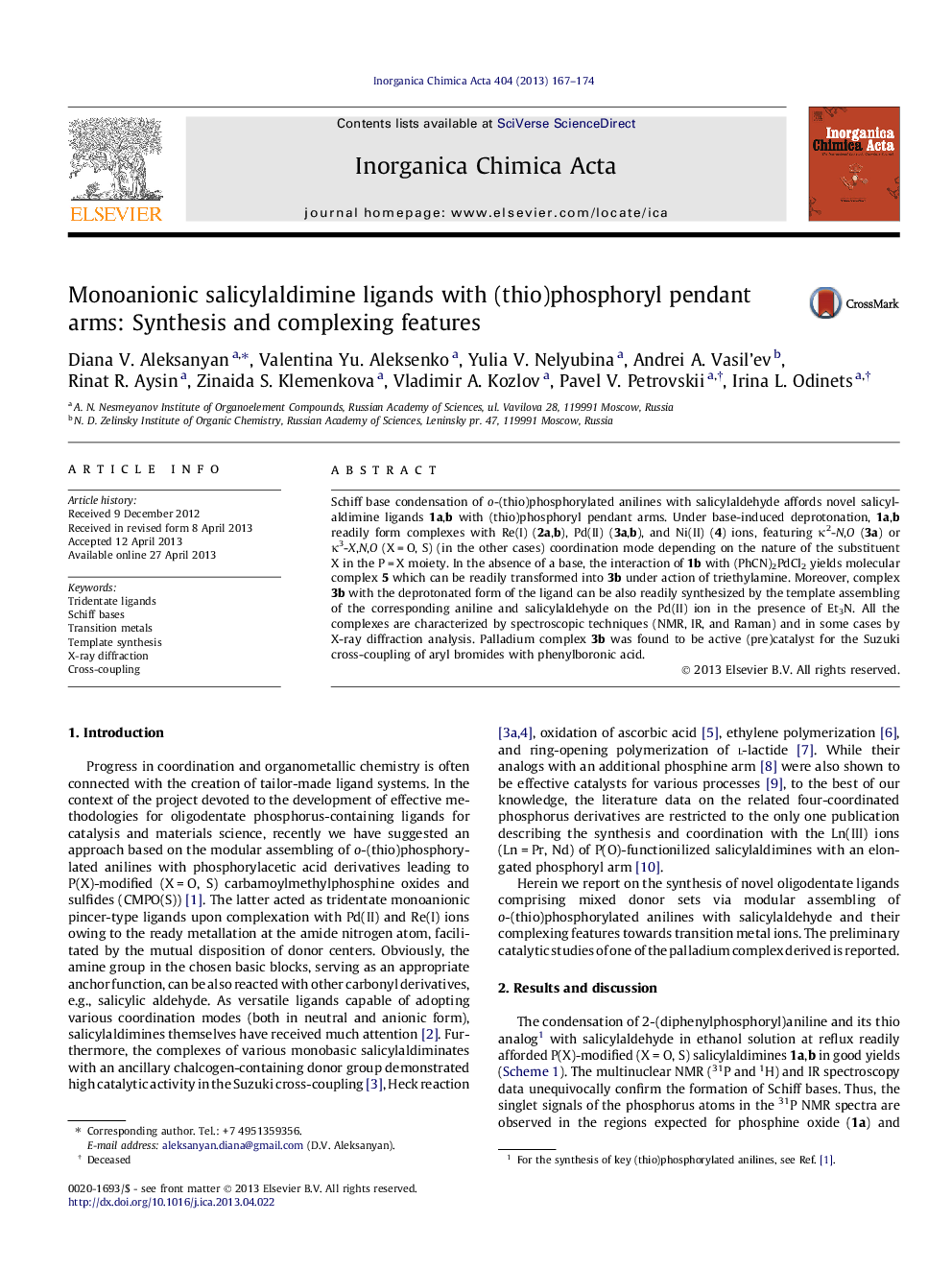| Article ID | Journal | Published Year | Pages | File Type |
|---|---|---|---|---|
| 1312316 | Inorganica Chimica Acta | 2013 | 8 Pages |
•Modular assembling of available blocks affords P(X)-substituted salicylaldimines.•The ligands show wide coordination diversity towards transition metals.•The structures of the complexes depend on the ligand nature and reaction conditions.•κ3-S,N,O palladium complex efficiently catalyzes the Suzuki cross-coupling.
Schiff base condensation of o-(thio)phosphorylated anilines with salicylaldehyde affords novel salicylaldimine ligands 1a,b with (thio)phosphoryl pendant arms. Under base-induced deprotonation, 1a,b readily form complexes with Re(I) (2a,b), Pd(II) (3a,b), and Ni(II) (4) ions, featuring κ2-N,O (3a) or κ3-X,N,O (X = O, S) (in the other cases) coordination mode depending on the nature of the substituent X in the P = X moiety. In the absence of a base, the interaction of 1b with (PhCN)2PdCl2 yields molecular complex 5 which can be readily transformed into 3b under action of triethylamine. Moreover, complex 3b with the deprotonated form of the ligand can be also readily synthesized by the template assembling of the corresponding aniline and salicylaldehyde on the Pd(II) ion in the presence of Et3N. All the complexes are characterized by spectroscopic techniques (NMR, IR, and Raman) and in some cases by X-ray diffraction analysis. Palladium complex 3b was found to be active (pre)catalyst for the Suzuki cross-coupling of aryl bromides with phenylboronic acid.
Graphical abstractSimple modular assembling procedures of o-(thio)phosphorylated anilines and salicylaldehyde afford novel tridentate ligands which form under base-induced deprotonation the complexes with Re(I), Pd(II), and Ni(II) ions, featuring κ2-N,O or κ3-X,N,O coordination mode depending on the substituent X in the P = X group.Figure optionsDownload full-size imageDownload as PowerPoint slide
